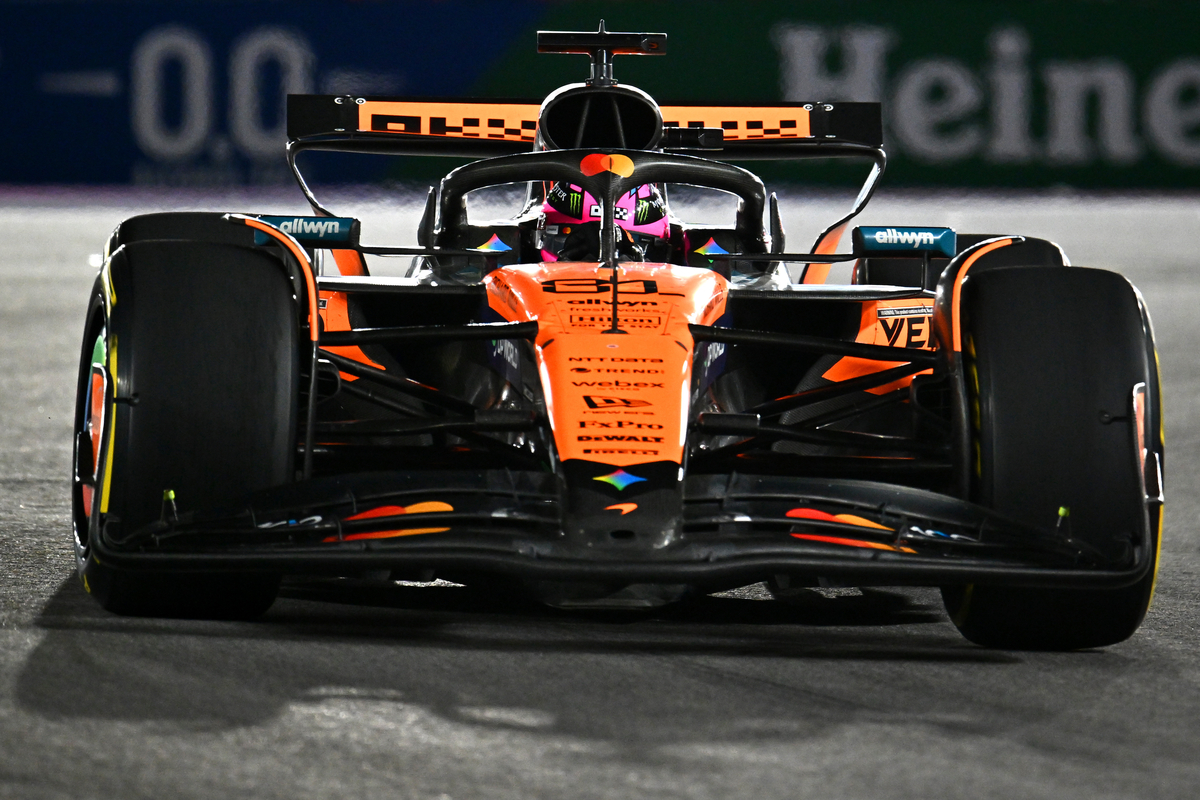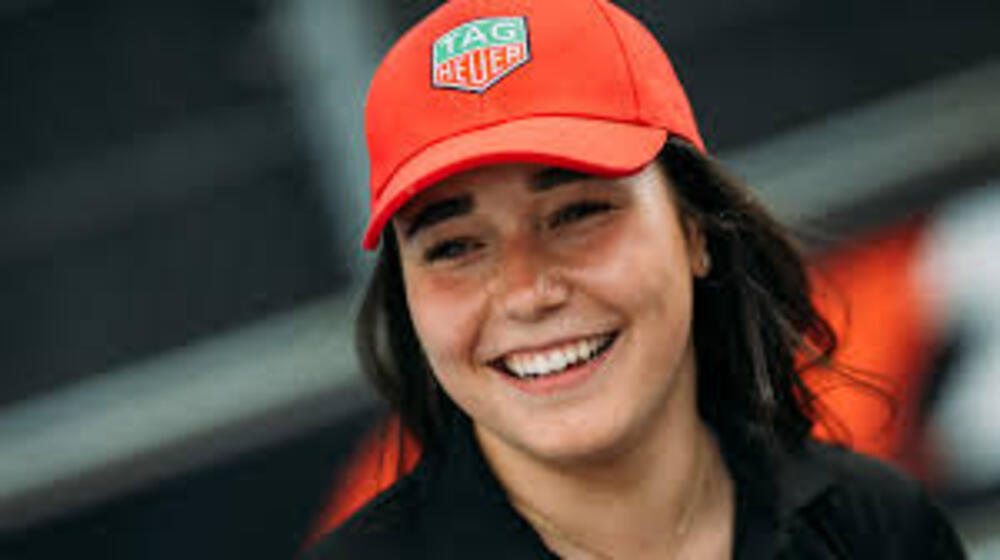Following what should have been a good pair of results at the F1 Las Vegas GP for McLaren, Team Principal Andrea Stella has opened up about the unexpected plank wear issues that ultimately lead to the teams disqualification from the race. An unexpected surge in porpoising (vertical oscillations that repeatedly slammed the cars into the Las Vegas Strip), led to the team’s rear skid penalties and disqualification.
The root cause of the porpoising
On the streets of Las Vegas, McLaren looked competitive, which was something heading into the weekend no-one was expecting. Lando Norris crossed the line in second, with team mate Oscar Piastri in fourth, which gave the team a solid result heading into the final 2 rounds of the season.
But four hours after the chequered flag, the stewards announced a double disqualification for the pair. Post-race inspections revealed that the rear skid blocks on both cars had worn beyond the 9mm minimum.
As a result, the championship standings shifted dramatically. What seemed to be a near-guaranteed boost for McLaren, especially Norris in his Championship lead, became a major blow. Max Verstappen capitalised and is now only 24 points behind Norris and on par with Piastri, heading into the last 2 rounds.
When asked about the root cause of the skid block wear at the F1 Las Vegas GP, Stella explained that the limited running in Practice had contributed, and the extent of the wear during the race had been unexpected.
“The specific cause that led to the situation was the unexpected occurrence of extensive porpoising, inducing large vertical oscillations of the car. The level of porpoising was exacerbated by the conditions in which the car operated during the race, and it was not anticipated based on what we had seen in Practice and based on the predictions of the car operating window in the race.”
McLaren taking precautions
All teams had limited dry weather running at the track, with rain on Friday and red flags during Thursday’s second practice session. Reflecting on the data obtained from the Practice sessions at the F1 Las Vegas GP, Stella believes that McLaren didn’t take excessive risk in terms of ride height, ensuring the cars had a safety margin during Qualifying and the race.
“Based on the data we had acquired in Practice, we do not believe we took excessive risks in terms of ride height, and we also added a safety margin for Qualifying and the race, compared to Practice, in terms of clearance to the ground. However, the safety margin was negated by the unexpected onset of the large vertical oscillations, which caused the car to touch the ground.
“The porpoising condition that the car developed in the race was also a difficult one to mitigate, as even a reduction in speed – an action that, in theory, should increase clearance to the ground – was only effective in some parts of the track, but in others was actually counterproductive.”
On track data and fall-out
As the Las Vegas GP unfolded, it quickly became apparent that McLaren was dealing with more than just the usual bumps and kerbs of street circuit. Both cars appeared to be sparking more then the rest of he grid.
Early suspicion focused on Norris’ dramatic late-race pace drop, with the Briton instructed to “lift and coast” as the final laps unfolded, suggesting a potential fuel issue. Norris had been around 10 seconds behind race leader Verstappen, but his pace faded rapidly. By the time the chequered flag fell on Lap 50, George Russell, who had been 10 seconds behind Norris earlier, had closed the gap to just 2.805 seconds.
Stella explained that while the drivers tried to manage the problem by adjusting speed and lines, the nature of the Las Vegas street circuit, with its mix of fast straights and tight corners, made it extremely difficult to mitigate.
“From the early laps of the race, it was clear from the data that the level of unexpected porpoising would be a concern. We were able to monitor the situation better on Lando’s car using telemetry data, but it was made more difficult on Oscar’s car, after we lost one of the sensors we use to establish the level of grounding.
“We realised relatively soon that this level of porpoising was causing a high level of skid wear energy, and this is the reason why both drivers started to take remedial actions in various parts of the circuit. Unfortunately, we also saw that, because of the car operating window and the circuit characteristics, most of these actions were not effective enough in reducing porpoising.”
Stewards’ decision
After the race, McLaren faced a difficult confirmation from the FIA: both cars had breached the minimum skid thickness regulations. Stella addressed the decision, explaining that the measurements were accurate but that the disqualiification reflected the strict nature of the rules.
“We verified together with the technical delegate that the measurement of the skid thickness was correct. Even if the excessive wear is relatively minor and in only one location, (as it was 0.12 mm for Lando and 0.26mm for Oscar), the regulation is very clear that the rear skids need to be at least 9mm at the end of the race in every location. Unlike sporting or financial rules, there is no proportionality in the application of penalties for technical regulation infringements. The FIA itself has admitted that this lack of proportionality should be addressed in the future to ensure that minor and accidental technical infringements, with minimal or no performance benefits, do not lead to disproportionate consequences.“
Stella emphasised that the breach was entirely unintentional, underscoring that the drivers and team had not deliberately flouted the rules.
“It should also be remembered that the FIA itself emphasised that the infringement was not intentional, there was no deliberate attempt to circumvent the regulations, and that there were also mitigating circumstances, as we explained to the event Stewards.”
Looking ahead to Qatar
Turning to the future, Stella addressed concerns about whether similar issues could affect McLaren at the next round in Qatar. He clarified that the conditions in Las Vegas were highly specific to that circuit and car setup, and the team had learned valuable lessons to avoid repetition.
“The conditions we experienced last weekend and which led to the onset of porpoising and excess of grounding, compared to what was expected, are very specific to the operating window of the car in Vegas and the circuit characteristics. We have a well-established and consolidated way of setting up the car, and we are confident that this will lead us to an optimal plan for the coming races, starting from the Lusail International Circuit.
“Nevertheless, we learn from every lesson, and the one in Las Vegas has been able to provide some useful information about the operating window of the car and the porpoising regime.”
Approach to performance
Stella also addressed questions about whether the F1 Las Vegas GP setback would force the team to adjust its approach to chasing performance. He reassured fans and media that McLaren’s philosophy remains the same, emphasising that the Vegas issue was an anomaly rather than a reflection of reckless engineering choices.
“What happened in Vegas was due to an anomaly in the behaviour of the car, rather than it being the outcome of an excessive or unreasonable chase of performance.
“Our way of acting and thinking as a team, with a strong focus on performance, has brought us to where we are today, namely winning two consecutive Constructors’ titles and having two drivers at the top of the Championship with two races to go.
“We, as a team, constantly learn from experience, and we calibrate our approach all the time, and we will certainly use any information gained through the situation experienced in Vegas.”
Team culture and morale
Reflecting on the wider impact of Las Vegas on the team, Stella highlighted the positive, resilient culture within McLaren. Despite the disappointment, he praised the way the group responded, focusing on learning rather than blame.
“Walking around the factory this week, I was particularly impressed by how deep and strong the cultural foundation of the team was. The reaction has been entirely focused on picking up the learning, dismissing any negativity, and making sure we come out stronger from this kind of situation. I was very glad to see how the team has become a mature group of united and forward-thinking racers.
“Episodes like this make you grow. They are painful, there is no point in hiding it, but pain is also part of our sport. There is no blame culture at McLaren, but rather a culture of constant progress and growth.
“I am sure that each and every one of us can’t wait for Friday afternoon in Qatar to arrive, so that we can give Lando and Oscar the best possible car, to enable them to be the only drivers capable of winning the world title.”
Drivers’ championship battle
Finally, Stella addressed the championship situation and whether any changes to driver management were imminent with Max Verstappen only 24 points behind Norris. He made clear that McLaren’s approach would remain consistent, allowing the drivers to fight freely for the title.
“No, there is no reason to do so. We have always said that as long as the maths does not say otherwise, we would leave it up to the two drivers to fight for their chance at the final victory, and that is how it will be in Qatar.
“Let’s not forget that if someone had told us at the start of the season that we would find ourselves in this situation with two races to go, we would have signed up for it! Now we are going to fight for the double World Championship with confidence and awareness of our strength.”





